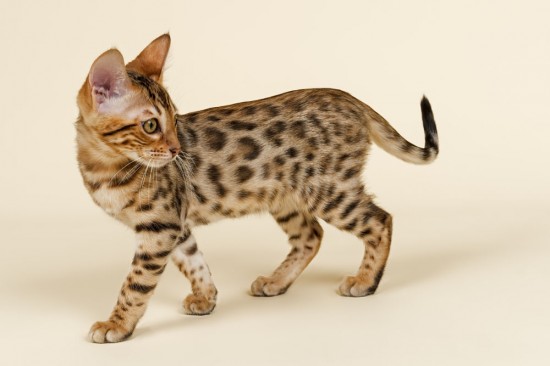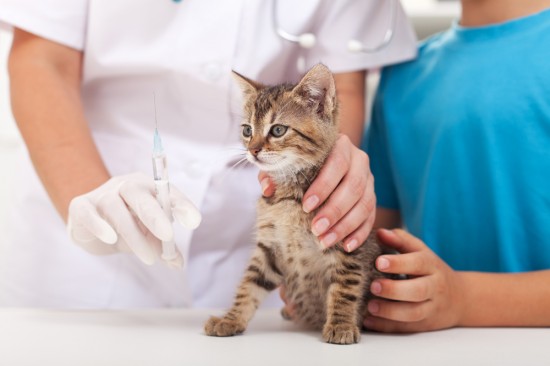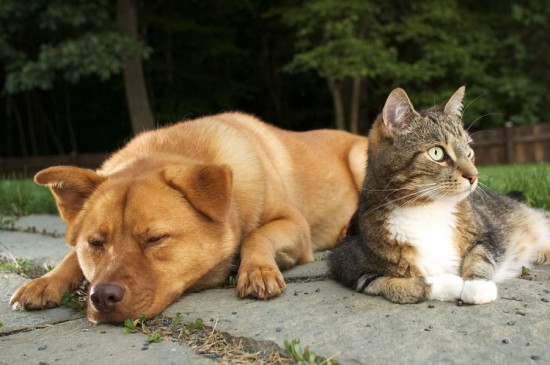

Cats are famously good at masking pain, which can make it difficult for even the most conscientious of owners to identify when something is amiss. Cats will often go out of their way to disguise when something is wrong, and unlike dogs, who will often deliberately make it very clear to their owners when they are in pain or discomfort, cats will sometimes even retreat and hide away when they feel unwell, preferring to keep themselves to themselves until they are feeling better.
Because this behaviour is often subtle, and observing something due to its absence rather than its presence can be hard, cat owners can easily spend a lot of time second-guessing their cat’s behaviours, and almost constantly being on the lookout for a potential problem or problem in the making.
If you are unsure how you can best tell if your cat is happy, healthy and well, or what the main indicators of wellness in the cat are, read on for our top five tips that indicate that your cat is almost certainly in good health.
There really is no such thing as the “average” cat when it comes to activity levels; all cats will sleep a significant amount of the day away, but this time snoozing is usually interspersed with bouts of activity, which can sometimes be fairly energetic! A cat that enjoys playing, hunting and chasing toys, goes in and out of the house on a regular basis and is always off exploring is almost certainly in good health. Even more sedentary of cats will generally enjoy looking out of the windows and pottering around in the garden on a daily basis (weather permitting) and can often be encouraged into play or gentle exercise through stimulation or enticement with a toy such as a feather or a ball.
Your cat should be able to run, jump and play without restriction, and without showing any signs of limping, pain or discomfort. A cat that is active and moving freely and willingly is unlikely to be suffering from any serious ailment!
Cats like to graze, eating little and often as and when it suits them. This can make it hard to judge exactly how much your cat is eating on a daily basis, but you should certainly be able to see a dent made in the contents of their food bowl over the course of the day. If you prepare something particularly delicious, such as fish or chicken, the healthy cat will usually express an interest in this (often very loudly)! and generally make it known that they are available to help you to eat it if you are in need of any assistance! Cats have a strong sense of smell but a much less pronounced sense of taste, and so strongly smelling foods are the most likely to entice your cat if you are attempting to gauge their appetite, or to tell if a sudden disinterest in food is due to ill health rather than a simple distain for what is on offer.
Much like people, cats can be found at every stage of the personality spectrum, from the grouchy old grump to the sociable, friendly feline who is constantly seeking attention. Once you are familiar with your cat’s normal personality and temperament, any deviations from this norm usually quickly become apparent. If your cat is still pleased to see you, appears happy and seeks out your company as much as usual, then the chances are that they are fairly stable and on an even keel. If your cat becomes progressively more grouchy within a short period of time, begins to act aggressively without a good reason or spends a lot of time hiding away, this may indicate a problem.
A happy, comfortable cat will purr, often loudly, when they are enjoying being petted, and purring in happiness is a good indicator that your cat is well. Purring is very soothing to the cat, and in some rare circumstances they will purr to soothe themselves if they are frightened, ill, injured or in pain. This is known as “inappropriate purring,” although it will usually be obvious if purring appears incongruous when compared to a situation or is due to another factor such as an injury, and so it is relatively easy to identify from regular happy purring.
Your cat’s eyes, nose and face are a big indicator of wellness, and their eyes should be clear, bright and alert, reactive to light and movement, and free from any discharge or obstruction. Their noses should be dry and smooth, and not running. The condition of your cat’s coat is one of the biggest and most obvious indicators of health, as a cat that is ill or not on top form will almost never have a shiny, clean coat in good condition. What you feed to your cat can make a big difference to the condition of their coat too, and good quality complete foods can often bring about a range of positive improvements in coat condition when compared to cheaper brands or those that are not nutritionally complete. If you notice that your cat’s coat is dulling or not as shiny as it used to be, try to identify if their diet might be at fault before you assume that something is wrong!
Even a cat that is adept at masking pain will find it hard not to react instinctively if something hurts them, and if they have any injuries or underlying problems that are painful, they will normally indicate this when touched in that area.
Some cats are naturally a little ticklish in places- often their tummies- but if your cat growls, lashes out or hisses when you stroke them in any particular area, this may be due to pain or a medical condition that is exacerbated when touched.
Stroking and petting your cat also gives you an opportunity to perform a stealthy physical examination upon your cat, looking for any indicators of pain or discomfort. If your cat is oblivious and purring happily while you do this, the chances are that you have nothing serious to worry about!
 Collars, Harnesses And Leads - What Do You Need For Your Dog
Collars, Harnesse
Collars, Harnesses And Leads - What Do You Need For Your Dog
Collars, Harnesse
 Does Your Dog Eat Carpet?
You gotta love dogs. Dogs are truly mans best friend. My
Does Your Dog Eat Carpet?
You gotta love dogs. Dogs are truly mans best friend. My
 All About Feline Parvovirus
All About Feline
All About Feline Parvovirus
All About Feline
 Calming Aids For Cats And Dogs
Calming Aids For
Calming Aids For Cats And Dogs
Calming Aids For
 Larger Dog Breeds And Digestive Issues
Larger Dog Breeds
Larger Dog Breeds And Digestive Issues
Larger Dog Breeds
Copyright © 2005-2016 Pet Information All Rights Reserved
Contact us: www162date@outlook.com